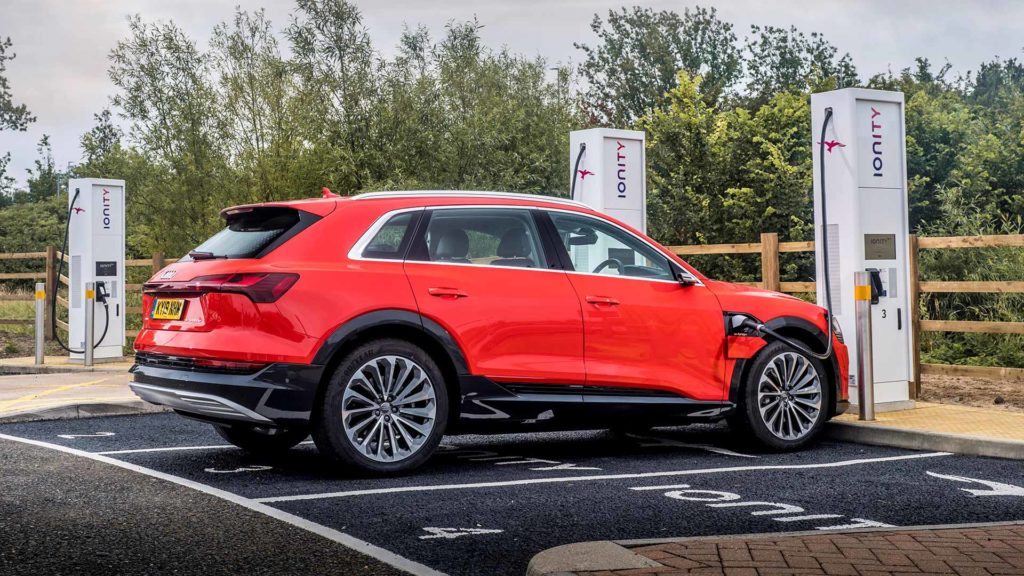All cars, whether powered by batteries, a traditional combustion engine or a hybrid system, are most efficient when driven at a steady speed. Saving energy is all about having a light right foot.
Heavy application of the accelerator pedal will dramatically increase electricity or fuel consumption, even though electric cars can regain power via regeneration when braking.
However, motorway driving, even at a steady speed, can quickly reduce your electric car’s range if you don’t approach it correctly.
Driving an EV on the motorway
Any journey on UK motorways soon illustrates how the 70mph limit is regarded by many as the minimum speed to drive.
Anecdotally, though, speeds on motorways seem to be dropping, with more drivers sticking to the limit. One likely reason for this is the proliferation of speed cameras. Another is fuel economy.
It’s largely down to aerodynamics: the faster you drive, the more the wind resistance – or aerodynamic drag – will work against you. And drag increases exponentially with speed.

If you drive at a constant 70mph on a motorway, you might, theoretically, get close to the manufacturer’s stated range for the battery.
Drive at 75mph instead, though, and your electric car’s range could drop by between five and 10 percent. At 80mph, it’s around 10 to 15 percent less than at 70mph.
Not surprisingly, there are big efficiency gains to be had from cruising at lower speeds. At a steady 60mph, you’ll see a significant improvement in range – and you may be surprised at how little difference it makes to your overall journey time.
That said, driving at 60mph in the inside lane of the motorway, dicing with 32-tonne trucks, could be a daunting experience.
Speed is of the essence
As with any car, the way you drive makes a difference to how far you can travel before ‘filling up’.
While electric cars outshine conventional vehicles in urban environments, thanks to their superior efficiency, on motorways it’s more of a level playing field.
So yes, speed really does matter, and if you can keep your head and cruise at 70mph (or less) on the motorway, you’ll achieve the best range.
Driving at lower speeds could also mean fewer stops for charging on a long journey. Truly a case of the tortoise and the hare…
ALSO READ:
How do I charge an electric car using solar panels?


The reason why electric cars are less efficient on motorways is because the speed they are driven at is higher than on urban roads. Simple. The electric motor has the same high efficiency of around 95% at any speed unlike diesel and petrol engines but the wind resistance goes up exponentially with speed. Internal combustion engines have dreadfully bad efficiency at low speeds so the vehicle’s efficiency at low speeds is also very low. At motorway speeds the wind resistance is high but so is the internal combustion engine efficiency which largely compensates. So, drivers moving over to electric propulsion will wonder why there is so much difference between the two. Driving at 20mph is a disaster for diesel and petrol cars. Their most efficient speed is around 45 to 50 mph or more but depends a lot on the model. Pollutants are proportional to efficiency. Slowing to 20 mph causes more pollution.
So what is the difference between an ice and an EV of the same model – you can only prove your aerodynamic resistance with the co-efficient of drag which has been eradicated from vehicle advertising for almost 2 decades !
I find it hard to believe an electric motor is 95% efficient – perhaps under no load and no driveline on a motor testing rig but out on the road I seriously doubt it, in retrospect ice is 20-30% efficient so considering costs per mile which are fairly matched, however if the figure was correct for motor efficiency the range would equal an ice vehicle ?
White paper exercises prove nothing in reality, and whilst car performance data has never been honest, people have become wise to these exaggerated claims .
Iin my opinion there are other factors to take into consideration,with our luxury add ons heated seats,the heater,electric moveable seats,radio,blowers,demisters and any other electrical device inside the car,also the temperature outside effecting the battery not by the cold directly but the air temp at the cell core the interior battery cell heaters,alsonsound systems,interior lights,phone usb chargers,the list goes on for a modern day car,so do we switch off all these extras to get them extra miles then its not really luxury is it.